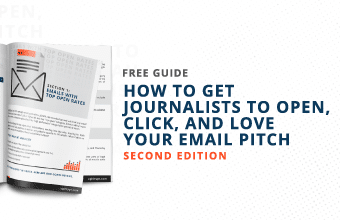With in-person meetings on hold for the foreseeable future, it’s hard to imagine a circumstance that would allow a traditional media roundtable anytime soon. But there’s no reason to write off the roundtable as a casualty of the COVID-19 crisis, particularly with all the videoconferencing tools that are now at everyone’s disposal.
And the benefits are well worth it, as a strategically executed roundtable can reap not only significant immediate coverage but, by establishing your senior executives as reliable industry thought leaders, help build stronger connections with influential media that will continue to pay dividends well down the road.
There are several inherent advantages of a virtual roundtable, in fact. It frees you to invite media in multiple locations instead of focusing on a single market and removes the burdensome costs and coordination of bringing in your panelists and booking a physical space. Here are six simple rules to ensure yours is a success:
Identify the theme
Your media invitees may not have to factor in travel time for a virtual roundtable, but they’ll still need a compelling reason to attend. Anchor your event on a newsworthy development with the promise of new information that has real value for them. Make your theme highly focused and convey it clearly in the invitation.
Limit the size
While webinars and certain other online meetings lend themselves to speaker view with attendees muted and hidden, roundtables are by their nature interactive. You’ll want to limit attendance to a number that can be comfortably managed with everyone’s video activated—ideally no more than four panelists and 10 or fewer media participants. If you have more media on your target list, consider hosting two separate sessions.
Keep it to an hour
Less is more, and particularly so in a virtual environment. Studies have shown that “Zoom fatigue” is a real thing so keep presentations streamlined and the Q&A focused and moving forward. A good moderator is crucial to maintain the flow and keep everyone on schedule (more on that later), as is having someone on hand to manage any technical issues with minimal delays.
Rehearse
While videoconferencing platforms are simpler and more accessible than ever, one panelist with a bad WiFi connection, poor audio, unflattering lighting or lack of familiarity with the conferencing tools can derail your best-laid plans. Rehearse your presentation with all panelists in the locations and using the same equipment they will have for the roundtable, troubleshooting any quality issues and confirming everyone’s comfort with the tools and process. Provide talking points to your panelists based on key messaging and anticipated media questions.
Choose your background
Not everyone’s home office set-up is ready for primetime viewing. Your panelists’ faces should be the focus—if they blend into the wall or there’s distracting clutter behind them, hide the less-than-professional view with a virtual background (likely without the need for a physical green screen, as long as their system is up to date). Keep the design simple—a corporate logo is a good solution—and make sure that the color of the background contrasts with their hair and clothing.
Establish protocol
You’ll want to designate a moderator to host your event and manage the flow of conversation and monitor questions. The moderator should preface the roundtable by explaining the format and laying out protocol for asking questions. You might give all participants camera access but use mike control to keep them muted until it is their time to ask a question, preventing people from talking over each other, for instance. Other options include having participants use a nonverbal feedback cue like Zoom’s “raise your hand” feature to draw the moderator’s attention and creating a chat room to handle overflow questions. Whatever videoconference platform you ultimately use for your roundtable—Zoom, Webex, Microsoft Teams or Google Meet—you’ll find a host of tools at your disposal to keep your roundtable running smoothly, ensuring a good experience for media and panelists alike.








